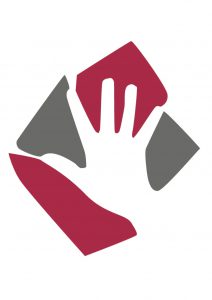CUBITAL TUNNEL SYNDROME
This is a condition resulting from an increase in pressure on the Ulnar nerve at the elbow. This nerve is responsible for supplying feeling to the little and ring fingers and most of the skin on the back of the hand. The nerve travels through a bony groove on the inner aspect of the elbow referred to as the Cubital tunnel.
WHAT CAUSES IT?
There are a number of causes of Cubital tunnel syndrome however a cause is not always apparent in every case. Typically anything that reduces the space for the nerve as it passes through the bony groove behind the elbow (often referred to as the funny bone) can cause symptoms.
WHAT ARE THE SIGNS AND SYMPTOMS?
The symptoms include tingling and numbness in the little and ring fingers as well as part of the back of the hand. There may also be pain on the inner aspect of the elbow that travels down the arm. The symptoms are generally apparent when the elbows are bent as when sleeping or reading. With more severe and prolonged pressure on the nerve the hand begins to feel clumsy and the small muscles of the hand may begin to waste away.
HOW IS IT DIAGNOSED?
A detailed history and examination is generally enough to establish the diagnosis. You will however require nerve conduction tests to confirm the diagnosis. Cubital tunnel syndrome can occasionally follow fractures around the elbow or elbow arthritis and you may also need an Xray of your elbow as part of the assessment.
HOW IS IT TREATED?
Unless the symptoms are recent or the problem is infrequent most patients will end up requiring surgery to avoid longstanding damage to the nerve. In those cases not requiring surgery, splints holding the elbows nearly straight and exercises may help.
WHAT DOES THE OPERATION INVOLVE?
In the vast majority of cases the operation involves the release of the ligament overlying the Ulnar nerve as it passes through the Cubital tunnel. This is performed as a day case procedure and the patient is given the choice between having this performed awake with the elbow numbed or being put to sleep. Occasionally the nerve may be moved out of the groove and positioned underneath the skin at the front of the elbow in a procedure called an anterior transposition. This is often reserved for recurrent cases or in elbows damaged by arthritis and fractures where removing the nerve from the groove reduces the stretch on it.
AFTERCARE
Following the operation you will normally have a bulky dressing covering your wound for 48hours. This is then replaced with a sticky dressing at 48hours until 10 days following your operation. The stitches will dissolve and do not require removal.
RETURN TO WORK
This depends on the nature of your work. For a sedentary occupation the time off is normally 2 weeks. For a manual occupation this can be as long as 6 weeks.
DRIVING
It is normally safe to drive within 6-7 days of your operation but can take up to 2 weeks before you are completely comfortable to start driving.
RETURN TO SPORT
This depends on the intensity of the sport but in most cases a return by 6 weeks is the norm. However more physically demanding sports can require as much as 3 months off.
COMPLICATIONS
Like with any surgery there are a number of small risks associated with this operation.
Infection (1%) is a risk with all surgery. In the majority of cases these are infections around the wound and can be treated with a course of antibiotics. The more unusual deep-seated infections however can require admission to hospital and surgery to clean the wound out if necessary.
Swelling and Stiffness can remain for many months following surgery. It is important to elevate the limb and keep all joints that are not immobilised, active.
Nerve Injury is a potential but very rare risk with this surgery. Often the nerves at greatest risk are the tiny nerves supplying skin in the area of the wound and cutting through these may result in an area of numbness that is not often troublesome. Injury to the Ulnar nerve itself is extremely rare and can in the worst case, result in permanent weakness or numbness in the hand.
Recurrence is an unusual complication. You may however find that the symptoms recur some time after the original operation having completely settled initially. In this rare event a second operation may be necessary.
Residual Numbness is a problem when the symptoms have been present for a long time prior to the operation. If you have complete numbness in your fingers prior to surgery there is a risk that the feeling may not completely return. This is due to scarring in the nerve from the prolonged pressure. It is important to note however that it can take up to 18 months for the feeling to completely return.
Complex Regional Pain Syndrome is an extremely rare (1%) complication that can follow any injury or surgery to a limb. In this situation the nerves in the arm over-react to the point where the hand becomes very painful, swollen and sensitive. This condition does improve with time but can be problematic for many months (see section on Complex Regional Pain Syndrome).
